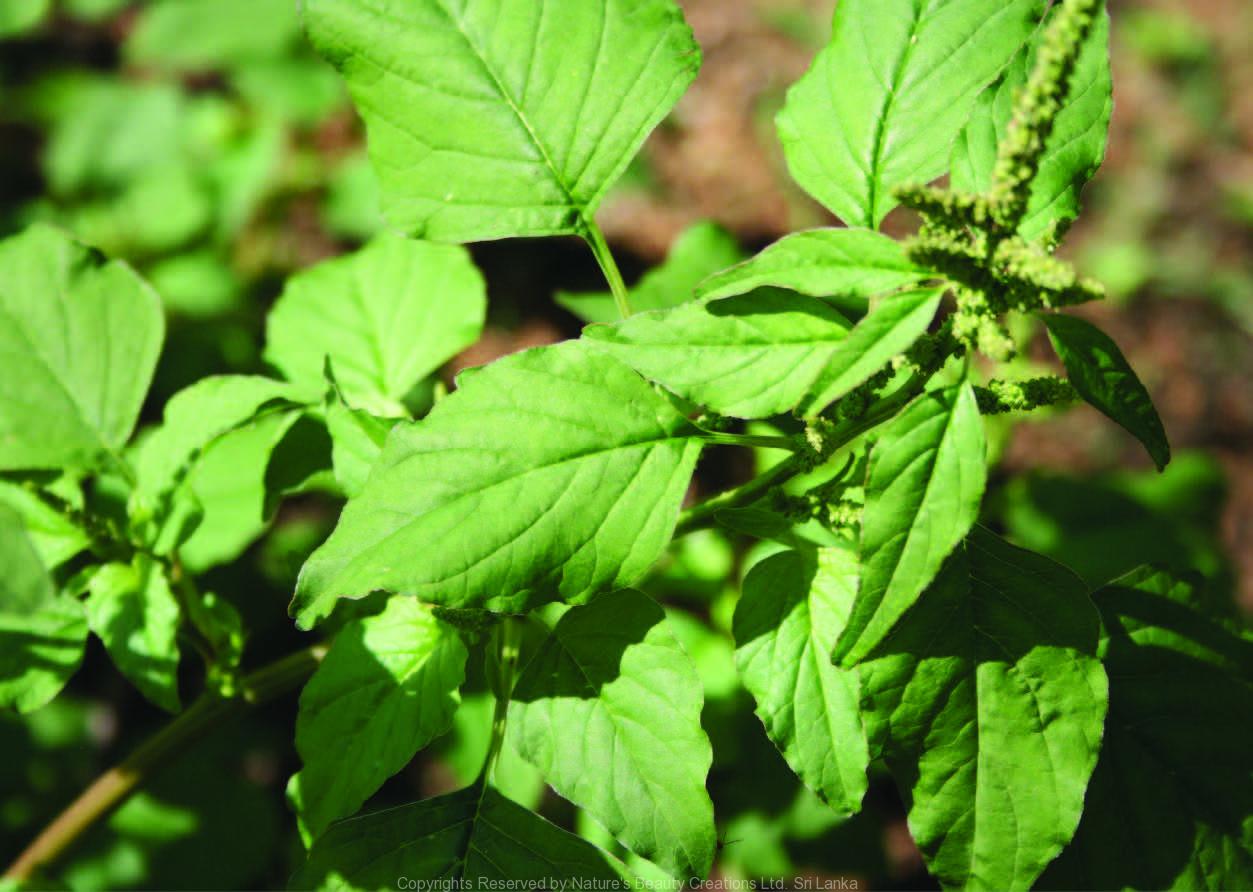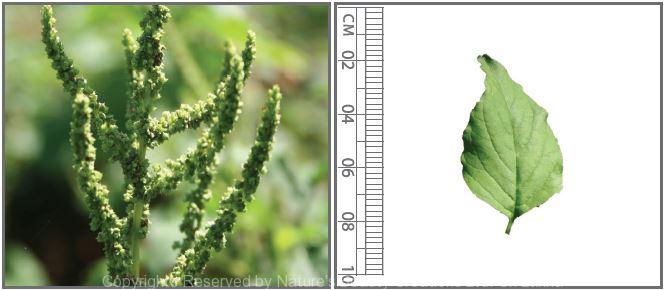

Traditional Knowledge
Useful plant parts :
Leaf and stem
Uses in traditional medicine :
- Acts as a cholagogue, mild diuretic and a demulcent to the urinary tract
- An antidote for snake bites, wasp stings and centipede bites
- Leaves are useful for inflammations, boils and abscesses
- Improves bowel movements
Scientific Research
Chemical constituents:
A lectin was isolated from seeds; amasterol from roots; antiviral protein: amaranthin, flavonoid: quercetin and its glycoside: rutin from leaves
Bioactivity :
Aqueous extract of aerial parts: antioxidative, free radical scavenger; lectin: antiproliferative, antifungal; methanol extract of whole plant: antidiabetic, antihyperlipidaemic; leaf extract: virucidal against measles virus
Clinical:
Note :
Leaves are used as a vegetable
References : Amin, I. et al., (2006), Antioxidant activity and phenolic content of raw and blanched Amaranthus species, Food Chemistry, 94(1), 47-52. Krishnamurthy, G. et al., (2011), Antihyperglycemic and hypolipidemic activity of methanolic extract of Amaranthus viridis leaves in experimen- tal diabetes, Indian J Pharmacol, 43(4), 450-4. Kumar, B. S. A. et al., (2009), Estimation of Rutin and Quercetin in Amaranthus viridis Linn by HPLC, Asian J. Exp. Sci., 23(1), 51-54. Kwon, S. Y. et al., (1997), A ribosome-inactivating protein from Amaran- thus viridis, Bioscience, Biotechnology and Biochemistry, 61(9), 1613-4. Navjot, K. et al., (2006), A Novel Antiproliferative and Antifungal Lectin from Amaranthus viridis Linn Seeds, Protein and Peptide Letters, 13(9), 897-905. Obi, R. K. et al., (2006), Virucidal potential of some edible Nigerian vegetables, African Journal of Biotechnology, 5(19), 1684-5315. Roy, S. et al., (1982), Amasterol, an ecdysone precursor and a growth inhibitor from Amaranthus viridis, Phytochemistry, 21(9), 2417–2420.
Copyrights Reserved By
Natures Beauty Creations




